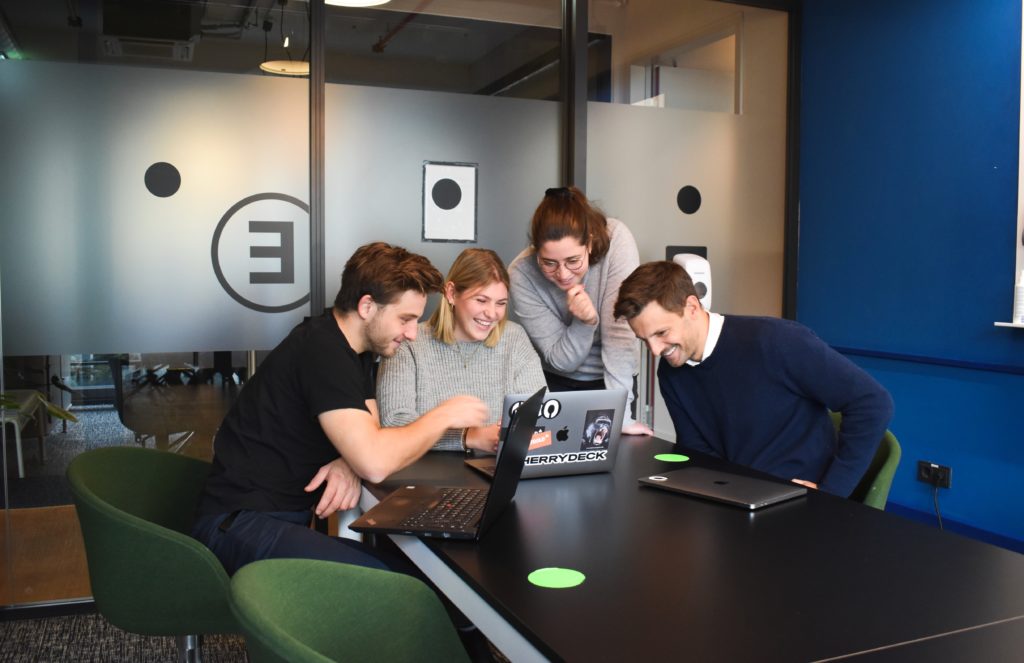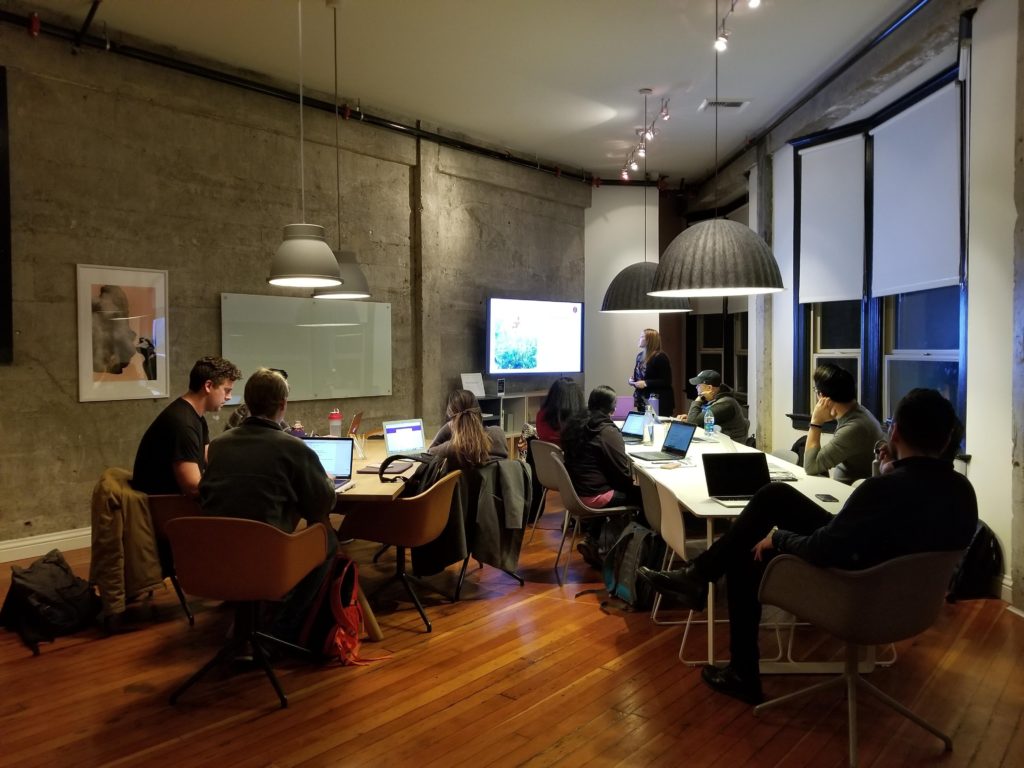What Is Learning Agility & How Can Educators Develop This Skill In Students?
As forces like globalisation, rapid technological development and changing business strategies continue to impact the workforce, it is more important than ever for students to develop the new skills to continue learning throughout their careers.
While imparting academic knowledge, educators can also help students to establish learning agility – known in other words as ‘figuring out what to do when you don’t know what to do’.
What Is Learning Agility?
Learning agility is different to learning ability or cognitive ability. According to researchers from Columbia University, it is “a mindset and corresponding collection of practices that allow leaders to continually develop, grow, and utilize new strategies that will equip them for the increasingly complex problems they face in their organizations.”
For students, learning agility encompasses the ability to quickly study a new problem and use their learning processes to produce new ideas and make decisions.
Agile learners need an open and receptive mindset. Students with high levels of learning agility typically excel at evaluating and comprehending new concepts. They continuously learn, acquire new skills, and seek new strategies for solving increasingly complex problems.
They are curious, learn from mistakes, and can apply this learning in unfamiliar contexts. This enables them to embrace new challenges and perform well under changing circumstances.
Essential components of learning agility
To create a model for understanding learning agility, DeRue et al conducted research that showed it has two main drivers:
Flexibility
This refers to the ability to abandon past solutions that no longer work in favour of new solutions that better suit future needs. Flexibility helps agile individuals understand how things are connected and change their thinking frameworks as needed.
Speed
This refers to the capacity for rapidly making sense of new situations and adapting behaviors to make a plan of action. A learning agile person can quickly digest large quantities of information and decide what is most important.
Learning Agility Is a Mindset That Can Be Instilled
DeRue also notes there are two dimensions of learning agility – cognitive and behavioural. While the cognitive aspect is hard-wired and therefore difficult to change, the behavioural component can be learned. Like exercising a muscle, practising the behaviours of an agile learner strengthens and reinforces them.
Agility to learn effectively can be developed at any life stage. It starts with a mindset that chooses to question the status quo, embrace new concepts, and risk making mistakes for the sake of learning.
Why Students Need To Develop Their Learning Agility
Students are future leaders, professionals, executives and more, so it’s vital for them to develop learning agility.
Employers Place Value On Learning Agility
High levels of learning agility are crucial to effective performance in 21st century workplaces. In rapidly evolving business models, organisations need high potential talent candidates with skills for success in volatile times.
Employees risk becoming incompetent in their jobs without the ability to adapt to changing processes and technologies.
Furthermore, learning agile people are likely to have more successful careers. Korn Ferry conducted research which showed people high in learning agility received twice as many promotions over 10 years than those low in learning agility. They also found learning agility accounted for 18 per cent of the reason for more frequent promotions.
Learn about the benefits of Experiential Learning and how it can be used to develop learning agility in students.
Builds On Skills Learned at University
High agility to learn allows students to make the most of their learning experiences. Developing the capacity to figure things out quickly better enables students to find innovative solutions to difficult problems and deal with challenging situations – ensuring they become high potential employees.
It also complements the employability skills, such as emotional intelligence and leadership potential, university students can develop alongside their academic knowledge.
How to Improve Students’ Learning Agility
To ensure students are equipped for long term success, learning agility training should commence at university. Here are several ways educators can develop it in their students.
Learning agility assessments
The essential components of learning agility can be best taught when you know which ones are lacking. Assessments exist for this purpose. Examples include:
- The Mettl Learning Agility Assessment
- Colombia University’s Learning Agility Assessment Inventory
- IBM’s Learning Agility Assessment Test
- Harver’s Learning Agility assessment
If you choose to assess learning agility in your students, ensure you use scientifically validated tests and that students understand assessment is about helping them become more agile learners.
Encourage the seeking out of learning opportunities
Educators can foster learning agility by encouraging students to:
- participate in information gathering and brainstorming to generate innovative solutions for complex problems
- be comfortable with interpersonal risk taking when their opinions differ to those of others
- ask questions, make suggestions, and voice their opinions
- risk being wrong and making mistakes they can learn from
- seek out new and different experiences that broaden their perspective
- reflect, both alone and with others, on their learning experiences.
Equip students with the skills to deal with uncertainty
Learning agile individuals are comfortable with unfamiliar situations. Educators can foster this in students by encouraging them to:
- participate in a range of different learning experiences such as online courses
- collaborate with a diverse range of peers, mentors and academic staff
- complete work-integrated learning projects that solve authentic industry problems
- take part in virtual internships where they will experience industry challenges
- remain open to criticism and resist the urge to make excuses or defend their actions
- take on challenges outside their comfort zone
- engage in feedback seeking to improve learning.
Students, Gain Experience & Skills Employers Are Recruiting For Today!
Enrol for free in Practera’s government-backed live programs to build your employability skills
Experiential Learning and the 5 Elements of Learning Agility
Aside from the two essential components discussed above, Korn Ferry have identified five dimensions of learning agility.
Mental agility
This is about embracing complexity and exploring problems in unique and different ways. Mentally agile people accept they don’t have all the answers, enjoy learning new things, and get excited by opportunities to discover novel and creative solutions.
People agility
This involves being open-minded with others and enjoying interactions with new and diverse groups of people. Individuals with people agility are good listeners, skilled communicators, and tend to bring out the best in others.
Change agility
Change agile learners know solutions that work today may not do so in future. They are comfortable with change, enjoy experimentation, and are always seeking new and better ways to do things.
Results agility
People with high levels of results agility respond well to challenges and enjoy delivering results in new and complex situations. They also enjoy inspiring others to achieve more than they thought was possible.
Self-awareness
Self-aware learners understand their own strengths and weaknesses. They are reflective and seek feedback to better understand and improve upon their learning.
Experiential learning is an ideal way to help your students develop all five dimensions of learning agility. Participating in workplace projects with an industry, community or government partner gives students the opportunity to collaborate with peers and professionals, solve real-world problems, report their results, and receive feedback about their performance.
How Practera Can Help
Practera works with higher education providers to offer premium quality experiential learning programs, at scale and with reduced delivery costs. Based on the theory developed by David Kolb, which highlights the importance of experiences in the human learning process, Practera’s platform and programs have been developed to support every stage of the experiential learning cycle.
Our fully supported and quality assured programs and project-based learning manager services support the development of learning agility by connecting students with authentic workplace experiences across numerous categories, including team projects, internships, boot camps, work simulations and more. These are curated from thousands of employers globally, including government bodies, corporations, and community organisations. By connecting with our team, we can help connect students with these global organisations and offer continuous support with their programs.
30-day free trial
Receive an exclusive 1:1 onboarding for your 30-day free trial with one of our experts and learn how to author, manage and launch amazing experiential learning programs with one easy-to-use platform.
Importantly, Practera’s user-friendly, innovative platform has been developed to maximise learning quality and the student experience for both onsite and online learning, including synchronous and asynchronous virtual delivery.
For educators, our evidence-based assessment, performance tracking and feedback devices support top-quality remote program delivery, facilitating continued provision of experiential learning regardless of lockdowns or restrictions. Inbuilt intelligence, for example, discerns optimal moments for reflection and encourages students to think deeply, encouraging retention and enhanced performance.
Embedded assessment tools provide multiple options for educators to assess student work, while ELSA – our world-first AI-assistant – conducts 24/7 monitoring to provide real-time recommendations based on learning science, saving you time and helping you deliver the best possible learning outcomes.
Practera’s experiential learning programs can also be scaffolded to facilitate student competency prior to a full placement or internship. Education institutions using this approach support more students to experience long term success.















